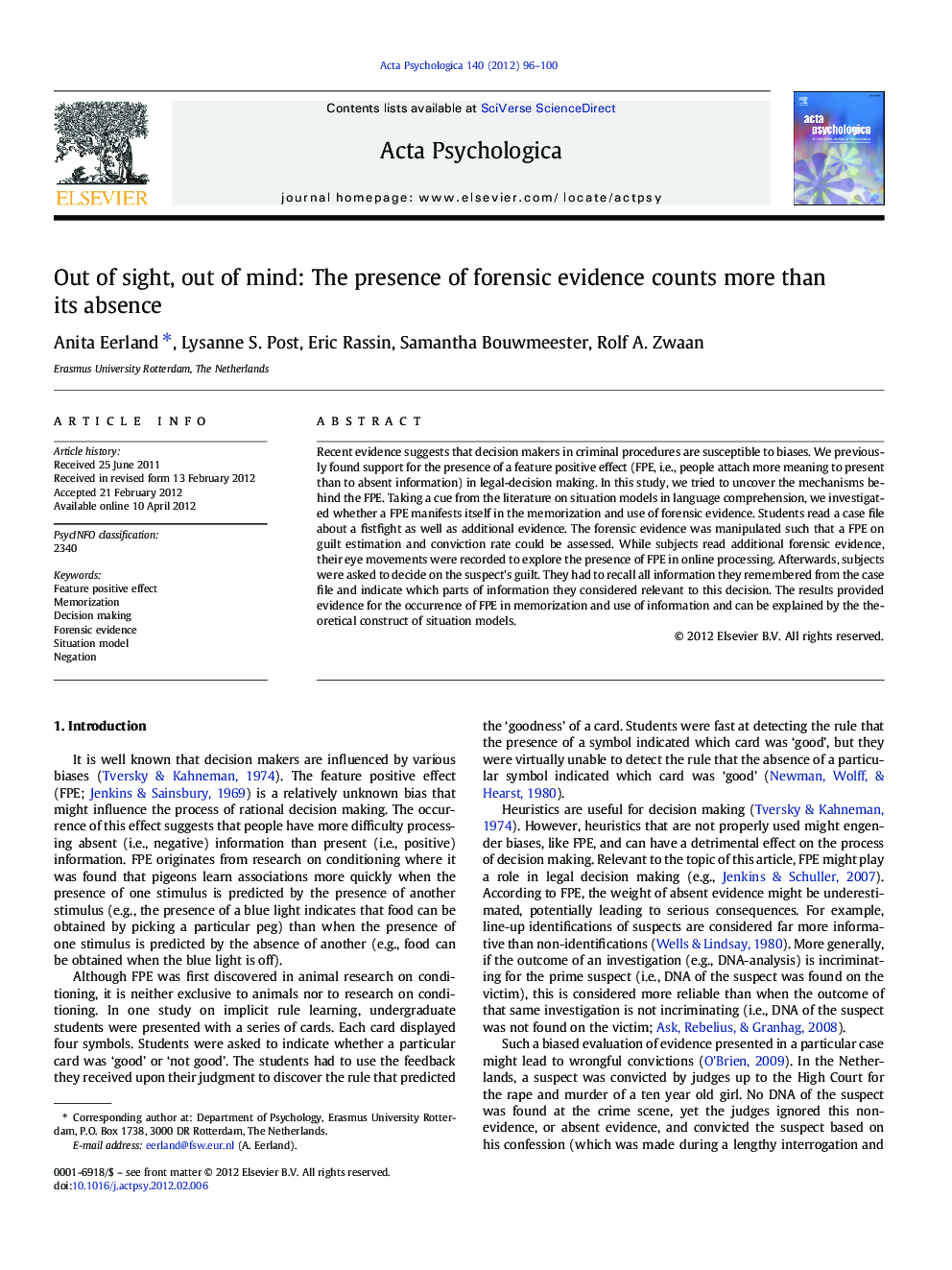| Article ID | Journal | Published Year | Pages | File Type |
|---|---|---|---|---|
| 919978 | Acta Psychologica | 2012 | 5 Pages |
Recent evidence suggests that decision makers in criminal procedures are susceptible to biases. We previously found support for the presence of a feature positive effect (FPE, i.e., people attach more meaning to present than to absent information) in legal-decision making. In this study, we tried to uncover the mechanisms behind the FPE. Taking a cue from the literature on situation models in language comprehension, we investigated whether a FPE manifests itself in the memorization and use of forensic evidence. Students read a case file about a fistfight as well as additional evidence. The forensic evidence was manipulated such that a FPE on guilt estimation and conviction rate could be assessed. While subjects read additional forensic evidence, their eye movements were recorded to explore the presence of FPE in online processing. Afterwards, subjects were asked to decide on the suspect's guilt. They had to recall all information they remembered from the case file and indicate which parts of information they considered relevant to this decision. The results provided evidence for the occurrence of FPE in memorization and use of information and can be explained by the theoretical construct of situation models.
► Situation model theory in legal decision making. ► Integration of legal decision making and text comprehension. ► A first attempt to try to uncover the mechanisms behind the feature positive effect (FPE). ► Evidence for the FPE in the processing, memorization and use of present and absent evidence.
